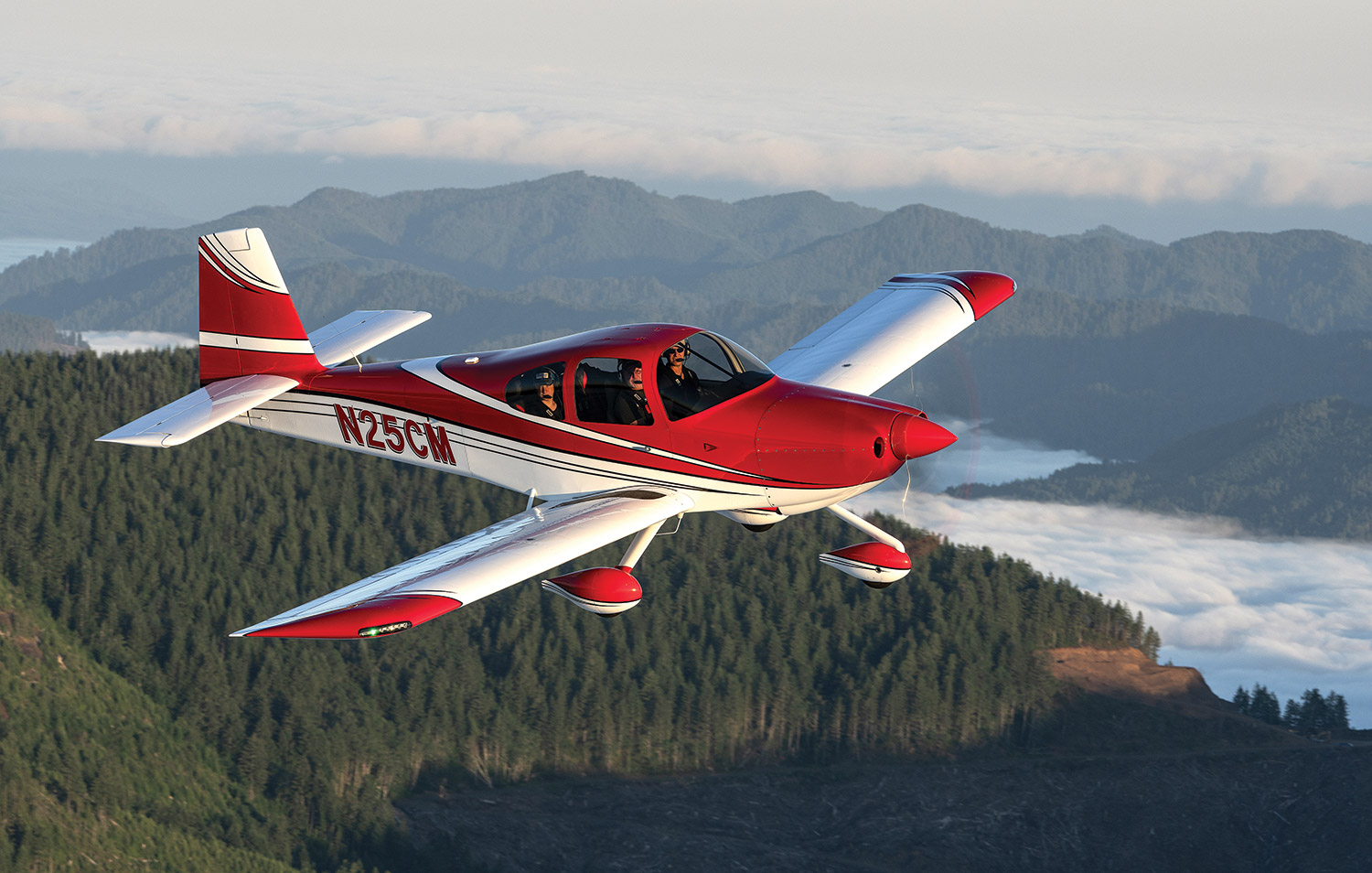 We choose to build aircraft for many reasons. There are elements of challenge to the project, of course, learning to master the details of project management while keeping the emotions in check. (As best we can.) At the end of which we find ourselves basking in our glory or deeply concerned for our sanity; sometimes a mixture of both. Most builders have some instigating reason to build beyond “education and recreation” that loosely centers on a mission: What do we want our dream airplane to do? How does it open doors in my flying? What can I do after the project is complete that I can’t do now? (And: Where did I put my 3/8-inch socket?)
We choose to build aircraft for many reasons. There are elements of challenge to the project, of course, learning to master the details of project management while keeping the emotions in check. (As best we can.) At the end of which we find ourselves basking in our glory or deeply concerned for our sanity; sometimes a mixture of both. Most builders have some instigating reason to build beyond “education and recreation” that loosely centers on a mission: What do we want our dream airplane to do? How does it open doors in my flying? What can I do after the project is complete that I can’t do now? (And: Where did I put my 3/8-inch socket?)
For Mark Easton, whose RV-10 you see on these pages, the answer was actually quite simple: He wanted a family airplane that was safe, one that he knew he could complete but also one that embodied some of the latest thinking in aviation. Technology was a driver for Easton, easily explained by his choice of automobile (a Tesla) but also his office. As in the right front seat of a Boeing 787 Dreamliner for American Airlines. It stands to reason, then, that Mark’s comfort with the latest in airliner tech would migrate to his Van’s RV-10 project.
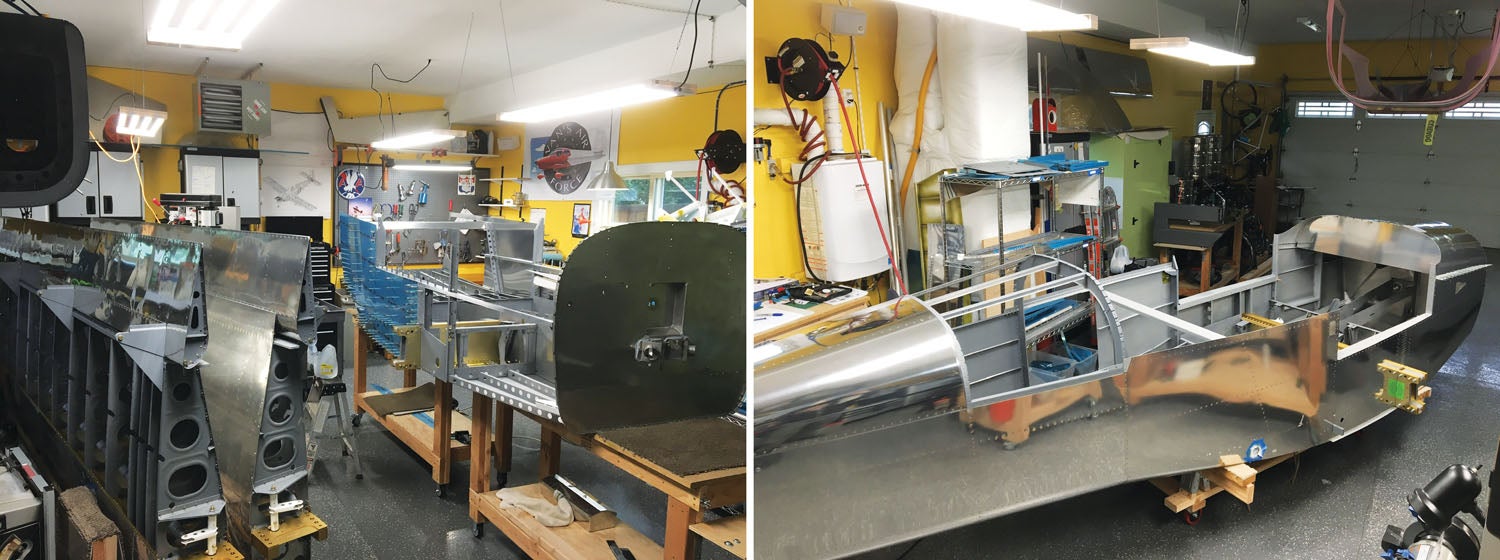
But it actually started well before that. “I’ve wanted to build an RV since I was a kid. You know how you’d see those ads in the back of the magazines, ‘You can build your own airplane!’ Although no one in my family was into aviation, I always thought it would be cool to build my own airplane,” Easton says. Nearer to his current build, he says he’d narrowed it down to the RV-10 or the RV-14, “two of the newest, most modern kits Van’s makes,” and eventually landed on the 10. “I didn’t want to decide which of my two kids would get to go flying.”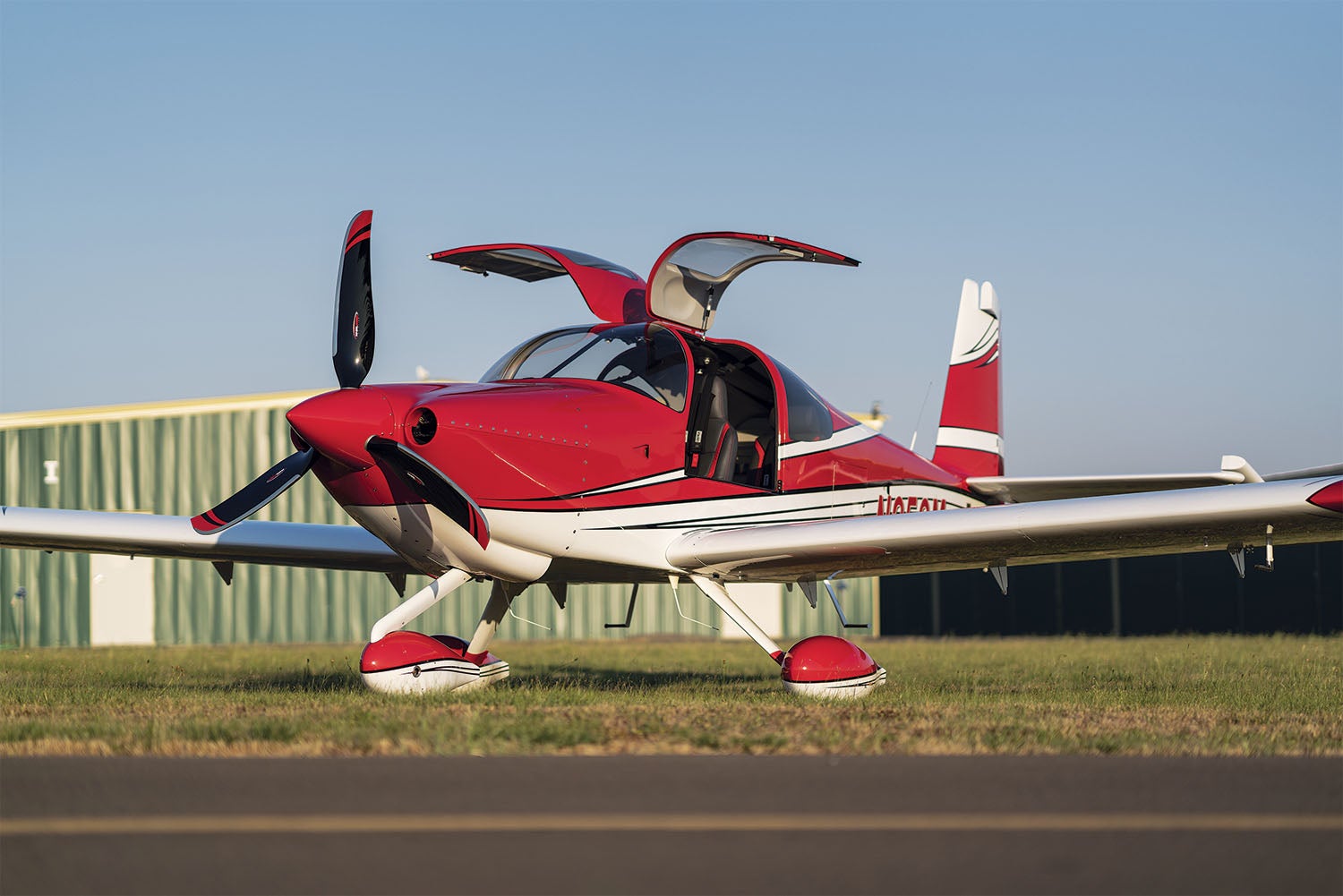
Why We’re Here
Part of the reason for this exploration is to better understand how a stalwart design like the RV-10 can be modded to accept more modern technology than Van’s applied when it was first designed. Van’s penned the 10 quite conventionally, with the expected all-metal wing on the bottom, a “traditional” engine and sticks instead of yokes. About the only unusual thing for an RV—besides a six-cylinder engine up front—was the fiberglass shell that topped the cabin, a necessity as Van’s opted for doors rather than a large canopy. (Grumman AA-series owners love the visibility of the canopy, less so the chance of the interior becoming wet while getting in and out during a rainstorm.) Not to diminish the immense amount of work to create the RV-10, but it was, in the grand scheme of things, a carefully scaled-up version of what they were already familiar with.
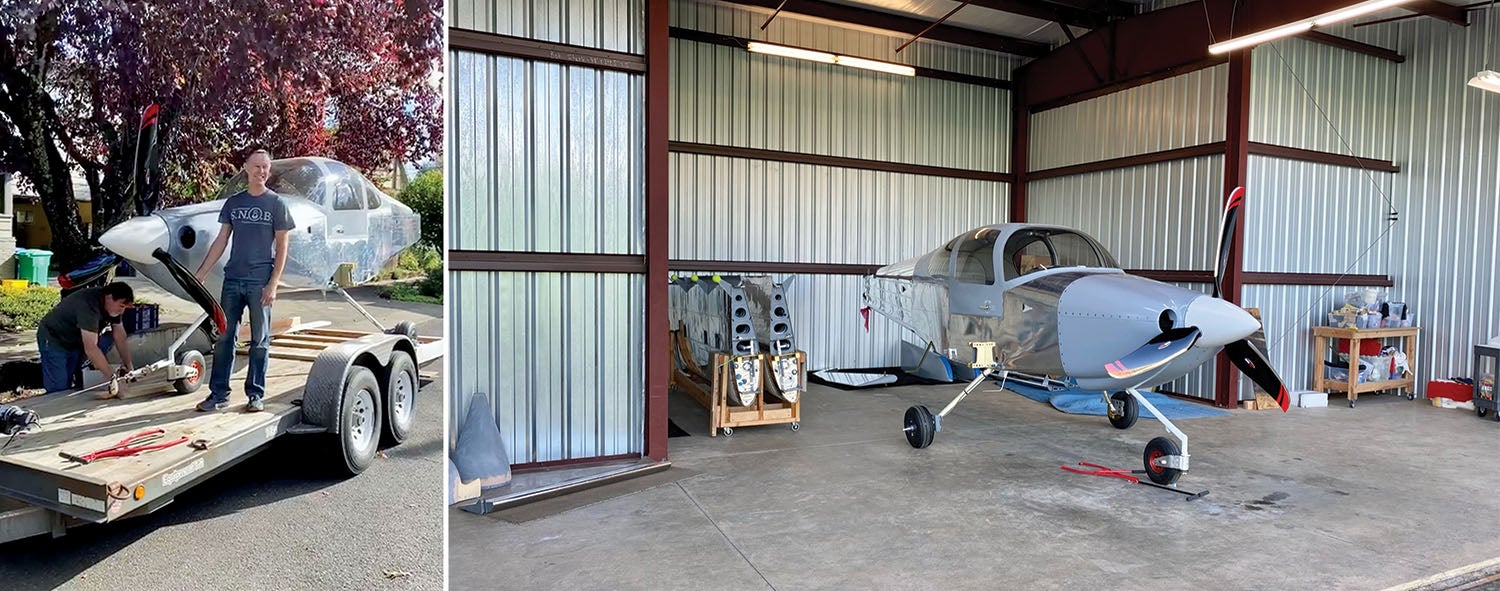
Today, though, the opportunities to make an RV-10 your own are extensive. And knowing that our own Myron Nelson had an early (ish) RV-10 built largely to plans, I invited him to fly with Mark and compare notes, lodge a few large-scale impressions.
But let’s circle back for some context. Easton’s RV-10 is not so much a radical departure from the baseline aircraft, but more an expression of what has emerged in the ecosystem since Dick VanGrunsven first took flight in the RV-10 in May of 2003. When a particular model is popular, the aftermarket can invest in things like a custom cowling and have some assurance of a return on that investment. Easton’s airplane is a good sampler of the “good stuff” available for the RV-10 builder.
Our story starts forward of the firewall. According to Easton, “The modifications started when I decided that I wanted to use the FlyEFII system. I really didn’t want to put that on myself—it was my first airplane and my first build—and I knew that I could not get it from Lycoming under the Thunderbolt brand. So I called up Barrett Precision Engines, and Rhonda said, ‘Yeah, we can do that.’ I talked to Robert Paisley at FlyEFII, and he was on board to send the components to Barrett. That way, all the needed pieces would be built on the engine from the start.” By looping in a willing engine partner early in the process, Easton not only got assistance from Barrett but didn’t have to pay for items that he’d eventually have to strip off a “core” engine and resell.
Easton started with a narrow-deck IO-540 core that Barrett completely rebuilt with 9:1 compression and its usual menu of tricks to match internal components by weight for maximum smoothness. The choice of a narrow-deck engine was more a matter of what was available at the time, and while the so-called wide-deck configuration is current, the previous style is still supported.
“And then I found out that Barrett has a really good cool-air induction system, which I like for the extra performance. But then you had to do the Show Planes cowl to make room for that.” Show Planes, a Medford, Oregon, accessory maker and builder-assist center, had developed a round-inlet cowling system for the RV-10 that incorporated a cold-air induction system that cleverly uses the lower quarter of each inlet for the intake. The smile-shaped ducts feed down toward the throttle body, intersected by dual K&N reusable air filters; the system is configurable for use with either the Barrett cold-air system (itself an inlet plenum that sits proud of the oil pan to help keep the induction air cool) or a standard Lycoming forward-facing system.
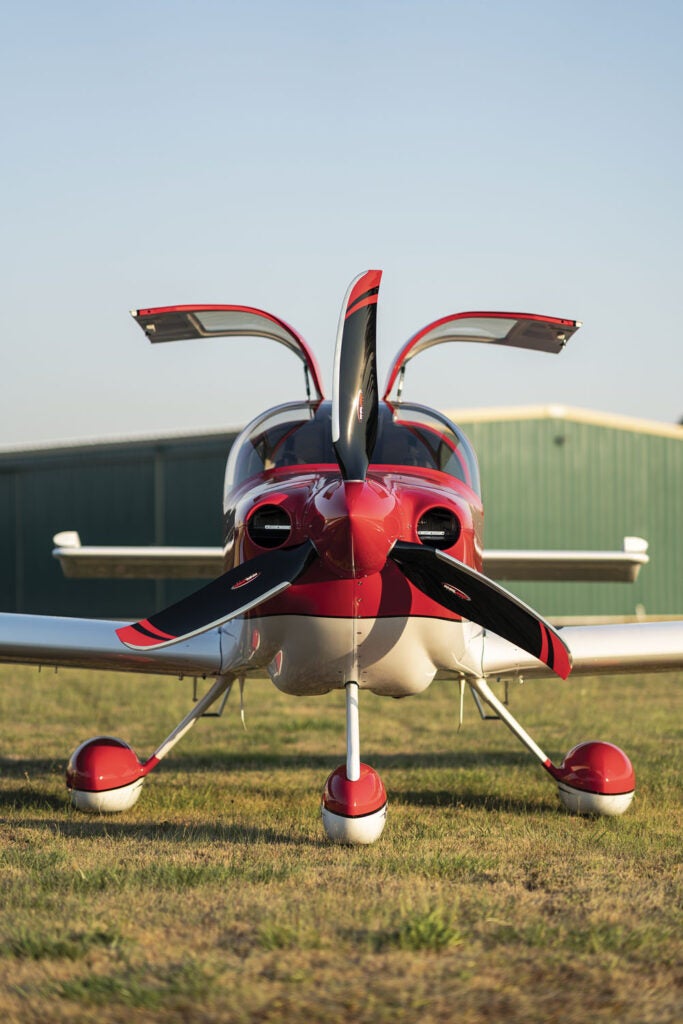
Easton again, “And then, when I discovered that it was possible to split the Show Planes cowl down the middle, which makes it easier to remove, that’s when I decided to go with a three-blade prop.” In this sense, one mod begat the next mod, which enabled another decision, three big steps away from the more conventional RV cowling and FWF configuration that comes with the kit. It’s worth noting, too, that the Show Planes cowling uses a larger spinner, but that was available from Whirl Wind Aviation, whose three-blade composite prop sits at the pointy end of the RV. Easton also went with Skybolt quick-turn fasteners for the cowling instead of the more common hidden piano hinge. “With the split lower cowling, I can remove the entire cowl by myself in 5 minutes. And, just as important, put it back on by myself.” Easton also says that this configuration helps with maintenance decisions. “I know that with the cowling being easier to remove, I’m more likely to check something I’m curious about.”
“In the end, did I need to do any of it?” Easton asks. “The cold-air induction costs money. The three-blade prop is more expensive. Could I have been happy without all of that? Sure. But it just kind of worked its way through the project.” Veteran builders know this mission creep well, but Easton tried to let the process guide itself rather than simply throw the latest and greatest at the airplane.
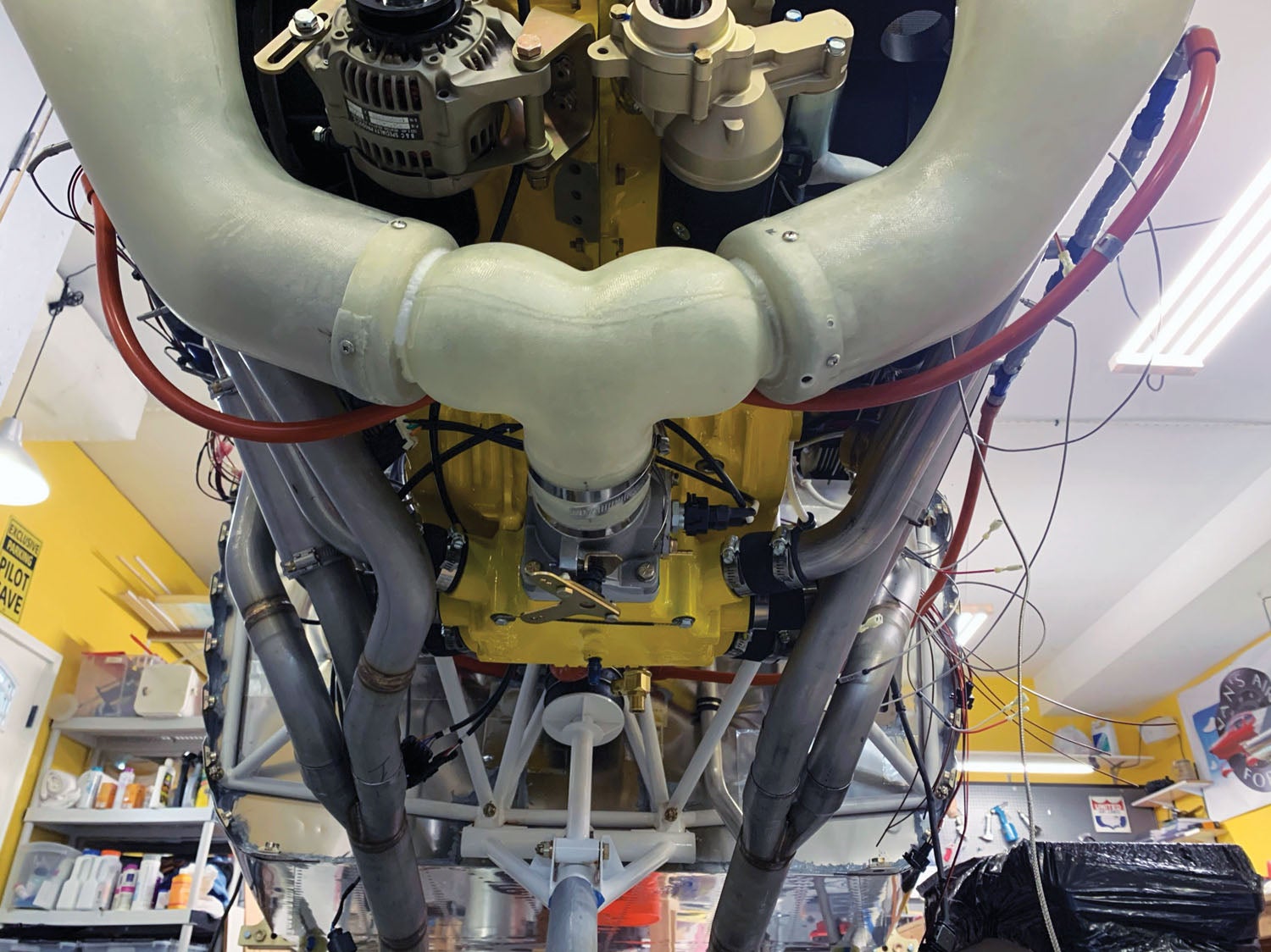
Avionics Ascendant
The same discussion of incremental cost informed the panel layout. Centered on Advanced Flight Systems EFISes, the panel is comprehensive and suitably redundant. “We decided to add the third screen, and that added $4200 or so to the project. But I was talking to my wife about it, and she pointed out that we’ll probably get some part of that back should we decide to sell but, more important, let’s build it the way we want to fly it.” In the typical configuration, the pilot’s screen is the primary flight display with the engine instruments along the lower edge. The large central screen is the multifunction display for moving map and weather, with the right side display configurable as either a PFD or MFD, depending on the needs of the copilot. (Mark’s wife, Caroline, is a 737 pilot for United, so a right-side PFD will be handy when she boots Mark over there.)
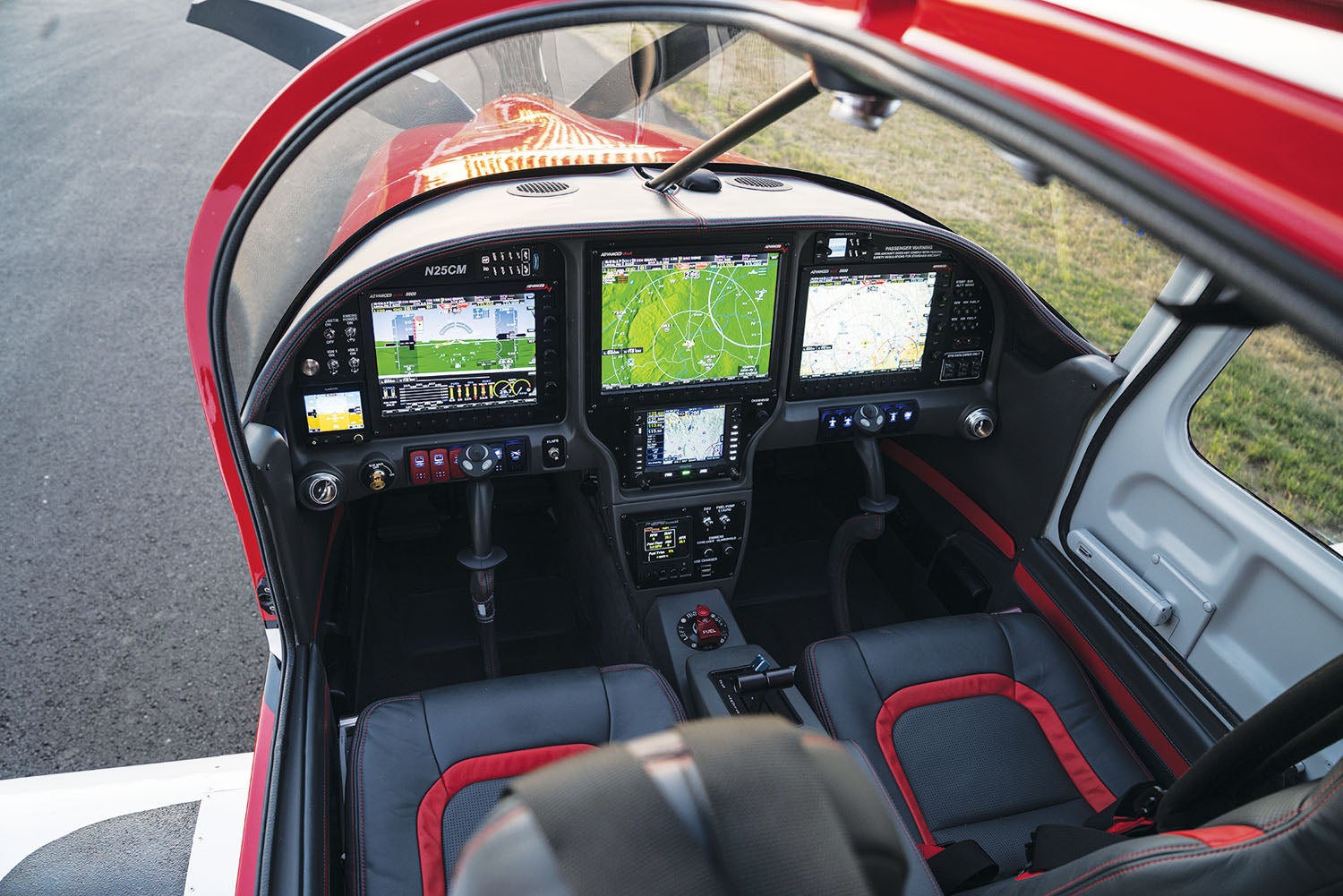
The rest of the avionics are made up of an Avidyne IFD 540 com/nav/GPS, backed up by a Dynon remote com, Dynon integrated autopilot and a Garmin G5 backup instrument. Power for all this comes through an Advanced Control Module that manages all electrical distribution for the main system and works through twin batteries, a conventional forward-mounted alternator and a backup alternator. A TCW Tech backup battery is also on board to help keep some critical systems alive in case of a massive electrical issue. (Which, fortunately, Easton has not had.) An essential bus ties all the, well, essential circuits to both main and aux buses, though those two can be crossfed so that items on either bus can be fed from the alternate source. In an electrically dependent airplane like Easton’s RV-10 (or his 787 day job), reliability and redundancy are crucial. Mark used a Quick Panel from Advanced Flight but did a lot of the integration himself.
Electrics FWF
You appreciate how important a stable, redundant electrical system is when you think more about the FlyEFII System32 digital ignition and fuel-injection system. Simply put, without electrical power, the engine doesn’t run. Developed by Robert Paisley, the system is sophisticated by light-aircraft terms, but it’s actually fairly simple among car and motorcycle systems. At its heart, the System32 has a pair of redundant Engine Control Units (ECUs) that monitor several variables: crank position, throttle position, manifold pressure, induction air temperature and fuel pressure. The ECUs take each sensor’s readings, compare them to stored maps, then calculate both the ignition timing and the fuel mixture.
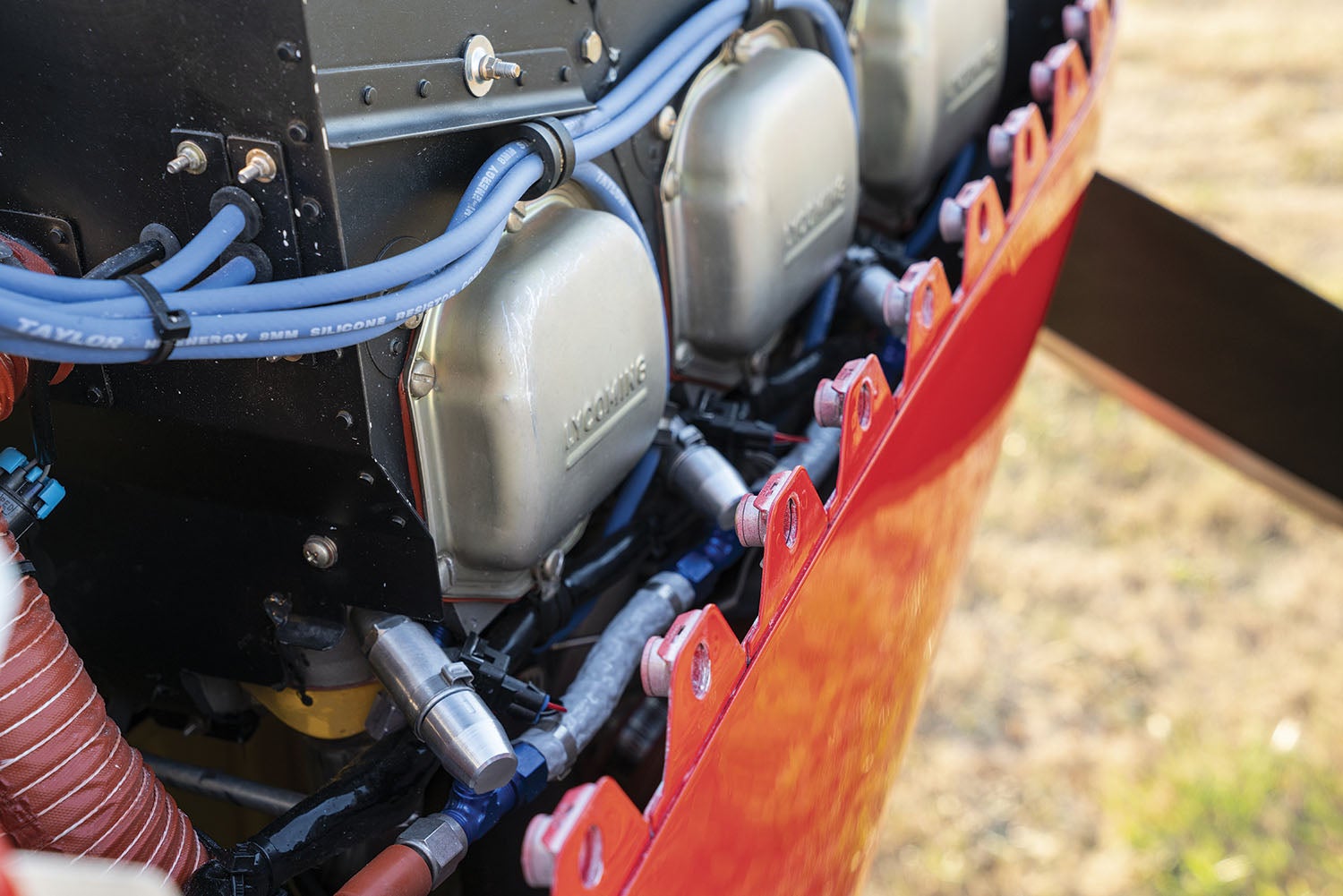
Like the most common electronic fuel injection systems, injectors mounted at the induction tube on each cylinder—the top injector hole is unused—meter fuel to each cylinder. The amount of fuel they disperse depends on inlet fuel pressure and the amount of time the injector solenoid is held open, also known as dwell time or duty cycle. Because each injector is controlled individually, it’s possible to trim each cylinder’s fuel delivery so that all six have a small “GAMI spread,” or the offset in fuel flow from the first cylinder to reach peak EGT and the last, when the overall mixture is leaned. A small spread means the engine runs more smoothly at lean-of-peak (LOP) fuel mixture.
The FlyEFII system includes coil packs to provide spark at each cylinder and runs automotive plugs; the pickoff point is a set of sensors on the starter ring gear, not at the magneto drive. (Which is subject to gear lash.) In Easton’s airplane, the coil packs are above and behind the engine, mounted to the engine mount.
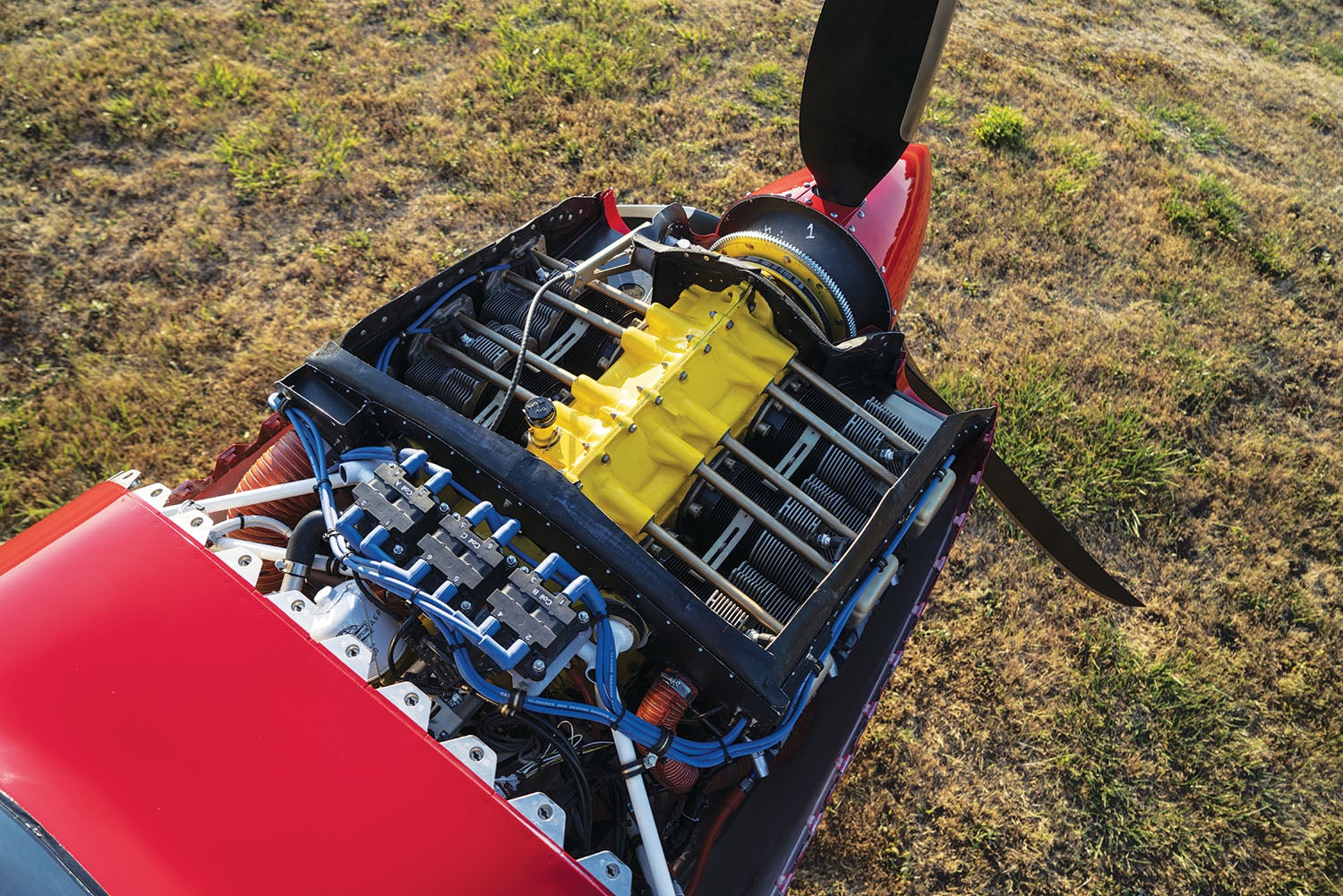
Of course, since System32 uses electronic fuel injection, the traditional Lycoming diaphragm pump is replaced by dual electric pumps. The system is “full return,” meaning that fuel is drawn from one of the RV-10’s tanks, circulated through the fuel pumps, lines and presented to the injectors; what’s not consumed is returned to the selected tank. Full-return systems are less prone to vapor lock than “one-way” setups, but they impose greater burdens on design and plumbing. In the grand scheme of the additional complications on Mark’s RV-10, this was not a huge new one.
The core benefits of the FlyEFII system are better-controlled fuel mixture, no need to manage the mixture knob in flight (though there is an exception) and an ignition system that can advance timing to improve efficiency. And since the fuel system is always under pressure, engine starts (cold and, especially, hot) are no-hassle affairs. The FlyEFII system can also send a data stream to the engine monitor to display fuel flow, though the dedicated System32 control head also shows fuel flow. For more on how this RV-10 flies, see “Flying the Electrons,” below.
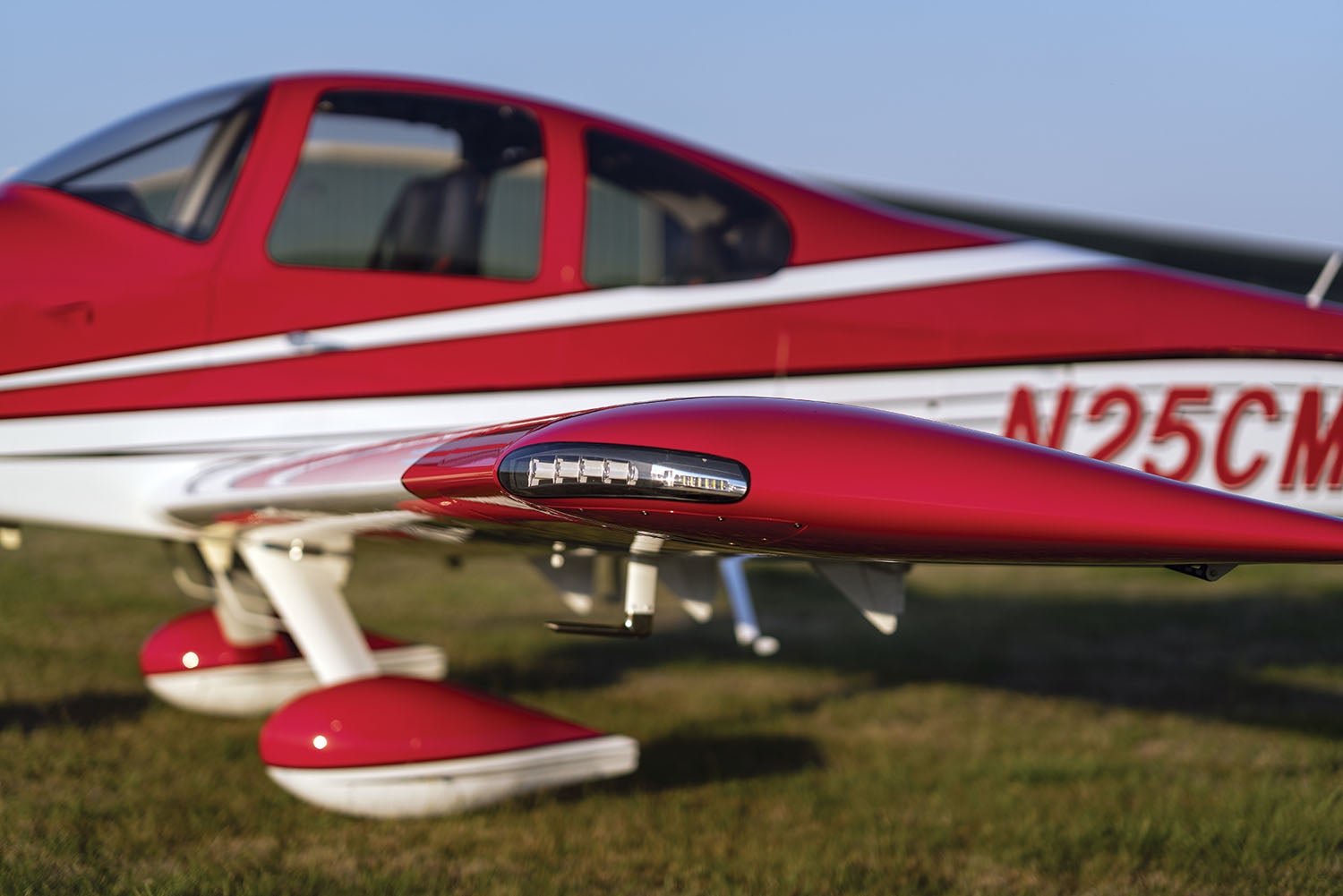
Inside Job
Easton spent a ton of time on the FWF and avionics, but he also splurged on the interior. Four leather seats from Aerosport Products, plus a custom center console, interior panels and other details give this RV-10 the finished feel of a modern Cirrus. Full Crow harnesses keep the passengers in place. The interior is amazingly quiet, too.
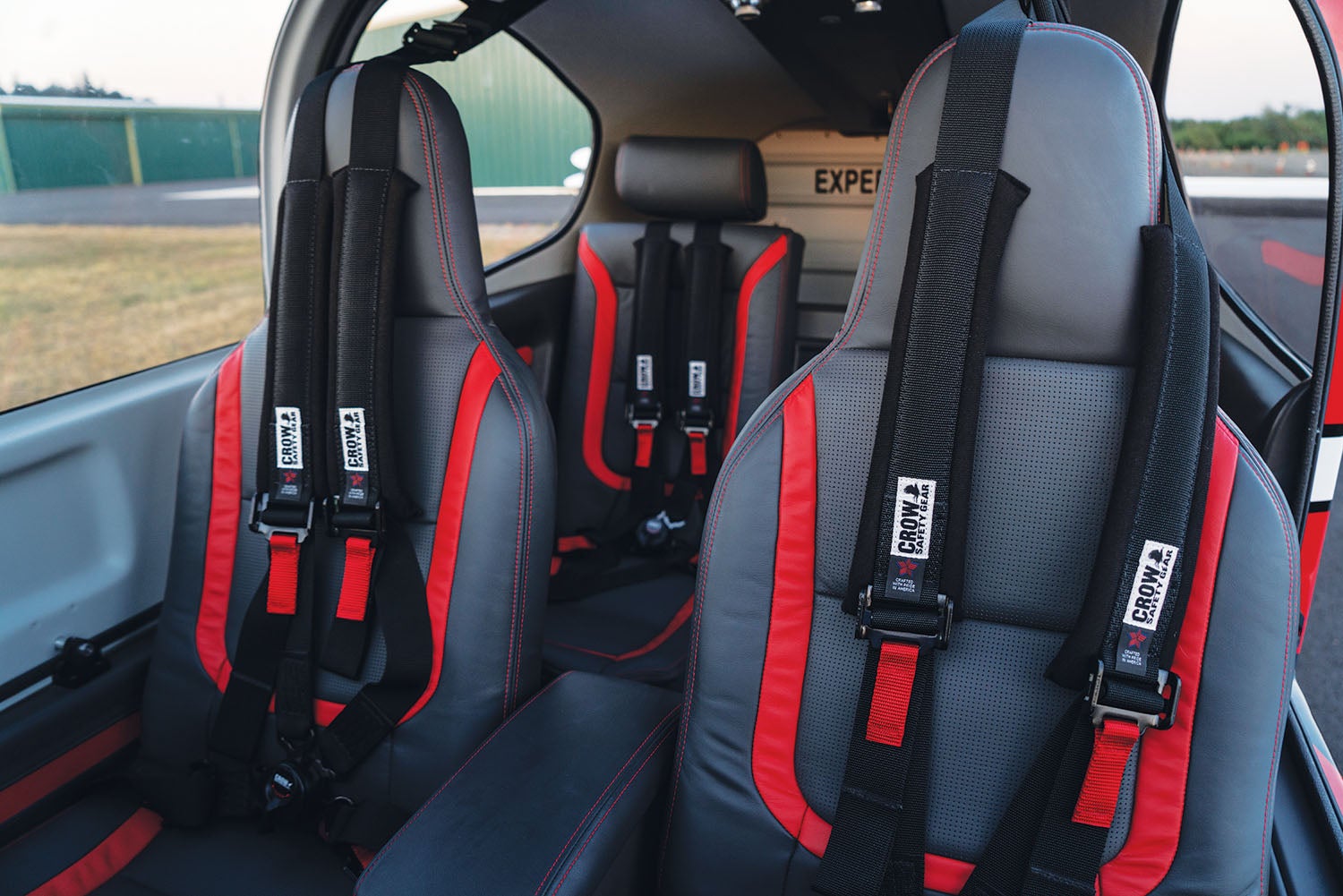
It wouldn’t be unreasonable to ask about Easton’s investment here, and his response is a number smaller than you’d think. “I’d say I have around $225,000 into the RV,” he says, noting that he saved a lot of money by starting with a “slow-build” kit, performing some avionics and much integration work on his own and farming out only what he didn’t have the expertise or tools to accomplish. Perhaps a positive side effect of his day job—time off—Easton was able to complete his RV-10 in five years. In fact, his first flight came five years and a day from the start of the project, which was built in a four-car garage in his home near Portland, Oregon.
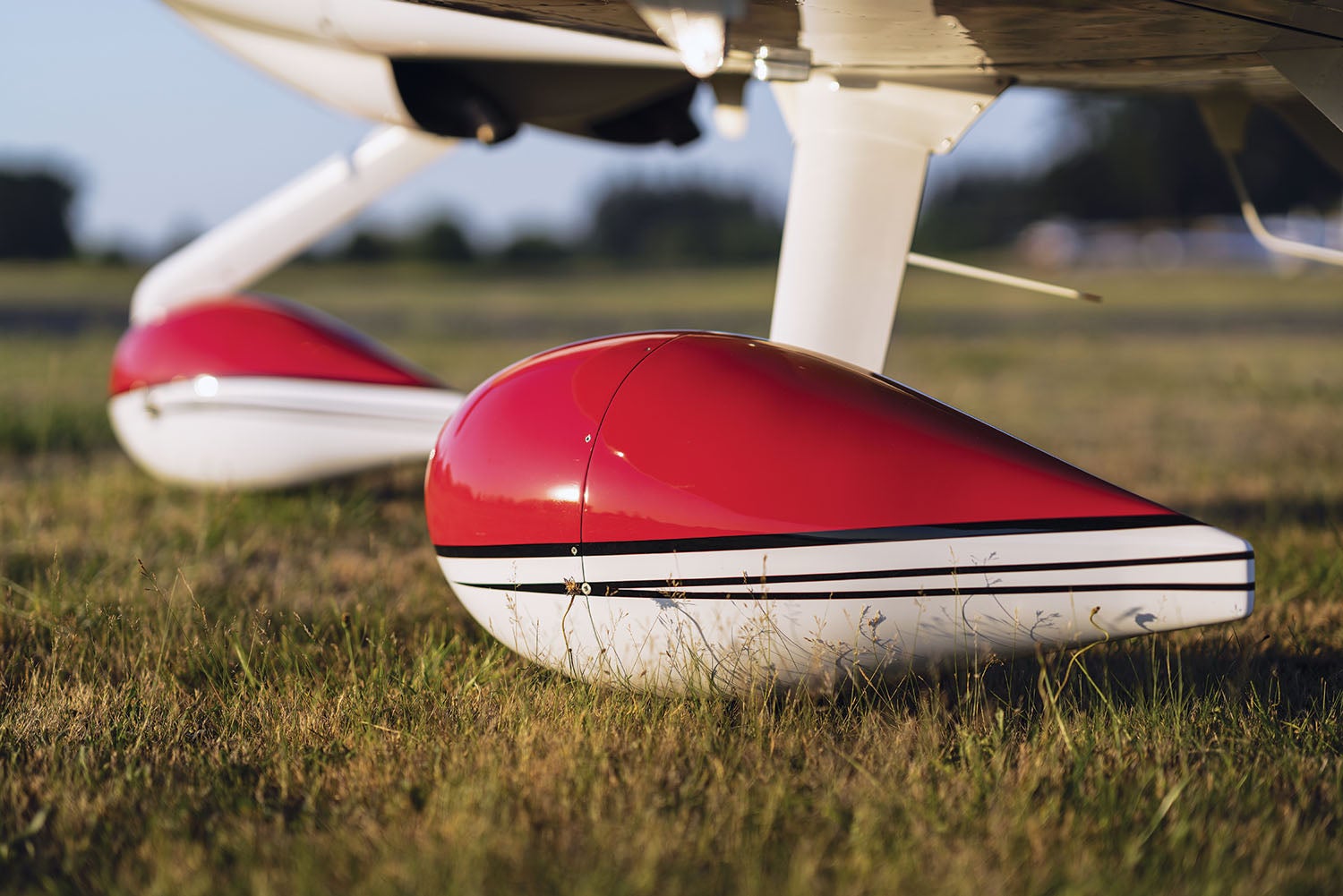
Mark’s RV-10, like so many, is still not 100% done, though he’s already had a few vacation days traveling with the family. He’d like to continue refining the cooling system; there’s some electrical noise to ferret out, among other small items. But he’s happy with his decisions. For the most part, the gamble on the FWF technology has paid off. This RV-10 is as simple to operate as it can be yet provides excellent performance along with the versatility and fine flying qualities that made the RV-10 a success in the first place.














